Due to the high local demand for processed poultry by hotels, restaurants, supermarkets, and various institutions, the feasibility study project for a frozen chicken import company represents one of the best investment opportunities that yield high returns, especially in light of water scarcity and the shortage of arable land.
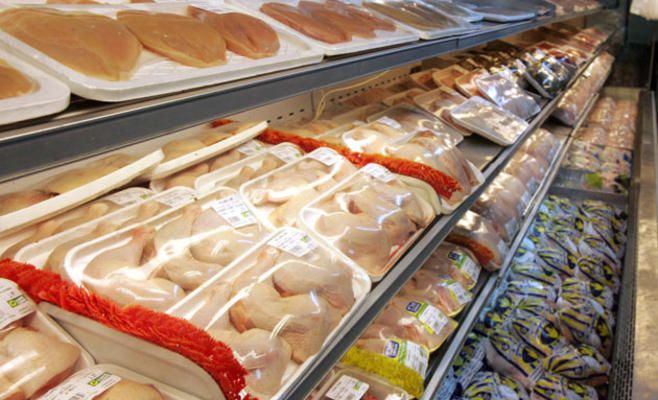
Due to the high local demand for poultry products supplied by hotels, restaurants, major markets, and various institutions, the feasibility study project for a frozen chicken import company is considered one of the best investment opportunities that generate high returns. Because of water scarcity and a lack of arable land, Gulf countries, in particular, need to import about 90% of their food requirements. These conditions make the growth and future prospects of the food sector a highly significant issue. The main reason for requesting a feasibility study for a frozen chicken import company is to meet the frozen food needs of your target market. The success of a frozen food company depends solely on developing a product that freezes well and also establishing a business infrastructure capable of packaging, storing, and delivering frozen foods. Estimates suggest that the global frozen food market is increasing, driven by a busy lifestyle combined with changing consumer preferences toward ready-to-cook meals, where convenience and cleanliness remain key factors driving the industry as a whole. … <Compared to fresh products, these items contain the maximum amount of vitamins and minerals. It is believed that the reason for this is that freezing preserves products for long periods without any preservatives and prevents the growth of microbes that cause food spoilage and widespread disposal. Moreover, it has been discovered that online purchasing of frozen foods is gaining popularity in developed countries, which will have a positive impact on the industry as a whole over the next eight years. Additionally, the availability of commercial and industrial freezing is expected to enhance industry growth. If you plan to start this business, you need to conduct market research to understand the nature of people in your area and a feasibility study to comprehend all requirements and obtain necessary funding.
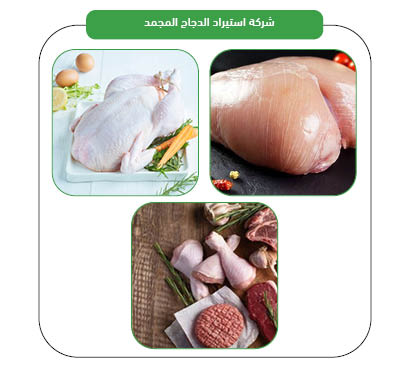

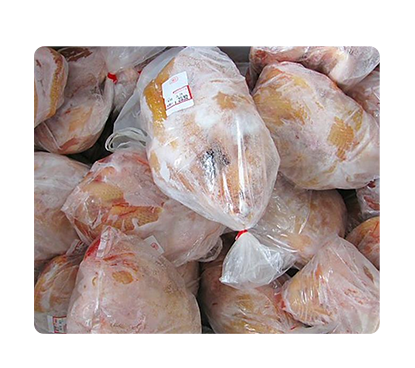
Focus on the quality of the products offered.
Presence of a highly skilled team.
Availability of specialized experts and technicians at the highest level.
Supervision by a management team with precision and discipline in work.
Utilization of advanced technology in operations and maintenance.
Attention to general cleanliness in warehouses.
The project imports frozen chicken of exceptional quality.
Commitment to maintaining the quality of tools and operational supplies.
Executive summary
Study project services/products
Market Size Analysis
Risk Assessment
Technical study
Financial study
Organizational and administrative study
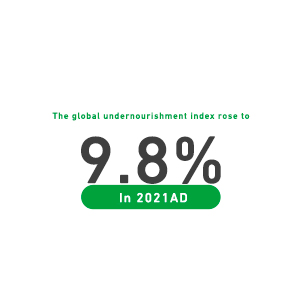
The Gulf Cooperation Council (GCC) countries comprise just 0.7% of the world’s population; however, they account for 3% of global spending on processed food and beverages—amounting to USD 102 billion out of a total USD 3.4 trillion. This highlights the region’s exceptionally high per capita food consumption, surpassing the global average.
This is unsurprising upon closer examination: the GCC population now exceeds 58 million people, with approximately 56.3% falling within the 25–54 age bracket—a vital and dynamic demographic that forms the backbone of the food industry market due to its youthfulness and vitality.
Saudi Arabia alone accounts for approximately 59.7% of the GCC’s total population and captures more than 53% of the food and beverage market share in the region. Accordingly, Mashroo3k Company has compiled key indicators of this vital market in the Kingdom, based on the latest available statistics:
By the end of Q2 2021, the number of food product factories was estimated at 916, with an additional 249 factories under construction.
The number of beverage factories stood at 209, with 71 more under construction.
Food product factories represented 11.1% of the total 8,258 operational factories in Saudi Arabia, while beverage factories accounted for 2.5%.
The Saudi food and beverage market was valued at SAR 168.8 billion.
By the end of 2021, food consumption reached SAR 221 billion, marking a 6% growth rate.
According to global reports, Saudi Arabia’s food consumption was valued at USD 70 billion—equivalent to 60% of the total food consumption across the Gulf region.
The fast-food market in Saudi Arabia is projected to reach USD 4.5 billion within the next three years.
The organic, healthy, and specialty food market is valued at USD 27 billion, while the halal food market stands at USD 6 billion.
Saudi Arabia imports approximately USD 14.5 billion worth of food and beverages annually.
In 2020, operating expenses for food and beverage service activities were estimated at SAR 34,032.10 million, up from SAR 30,069.23 million in 2018.
Operating revenues for food and beverage service activities reached SAR 61,557.77 million in 2020, up from SAR 54,866.87 million in 2018.
By 2027, operating expenses for food and beverage service activities are expected to reach SAR 52,489.34 million, while operating revenues are forecast to climb to SAR 92,084.64 million.
Total operating revenues for the food product manufacturing sector in Saudi Arabia are projected to reach SAR 128,540.573 million by 2027.
Global Food Sector Overview:
According to UNICEF, the global malnutrition rate rose to 9.8% in 2021.
Between 702 million and 828 million people are suffering from hunger worldwide.
The global food market generates approximately USD 8.66 trillion in revenue.
About 7.8% of global food market revenue is expected to be generated through online sales.
Total global production of primary crops amounts to 9.4 billion tons.
Total global production of red and white meats is 337 million tons.
Total global fruit production is 883 million tons.
Total global vegetable production is 1,128 million tons.
Total global vegetable oil production is 201 million tons.
Total global dairy production stands at 883 million tons.
Total global egg production amounts to 83 million tons.
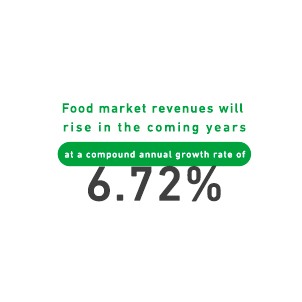
The fast-food market in Saudi Arabia is expected to reach USD 4.5 billion within the next three years.
The organic, healthy, and specialty food market in the Kingdom has reached USD 27 billion, while the halal food market is valued at USD 6 billion.
Saudi Arabia’s imports of food and beverage products are estimated at approximately USD 14.5 billion annually.
In 2020, operating expenses for food and beverage service activities were estimated at SAR 34,032.10 million, compared to SAR 30,069.23 million in 2018.
Operating revenues for food and beverage service activities reached SAR 61,557.77 million in 2020, up from SAR 54,866.87 million in 2018.
By 2027, operating expenses for food and beverage service activities are expected to reach SAR 52,489.34 million, while operating revenues are projected to reach SAR 92,084.64 million.
The total projected operating revenues for the food product manufacturing sector in Saudi Arabia are expected to reach SAR 128,540.573 million by 2027.